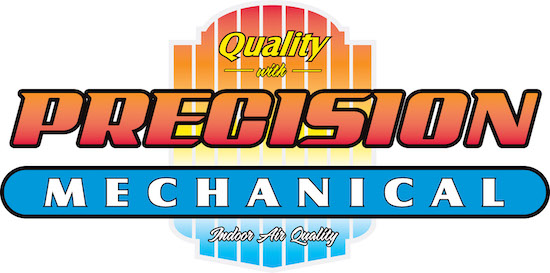
When shopping for a heating and cooling system for your residence, it’s critical to choose one that balances efficiency, operation and finances. That’s why many homeowners use mini-splits for comfort in their home.
Mini-splits—often known as ductless mini-splits—have a variety of advantages that make them an appealing solution for both homes and businesses. They're extremely energy efficient, reducing energy consumption and saving on utility expenses, because they eliminate the energy losses affiliated with the ductwork found in traditional HVAC systems. They also enable users to customize the temperature in each room, enhancing overall comfort while not wasting energy.
If you’re interested in mini-split installation in Rapid City, it’s necessary to first determine if these devices are the right solution for your living situation. Here, we’ll investigate how mini-splits stack up against other heating and cooling methods.
What a Mini-Split Is and How It Works
A mini-split, or ductless mini-split, is a heating and cooling system that doesn't need ductwork to function. It's often used in homes that don't have pre-existing air ducts and for homes with rooms that aren’t served well by the home's existing HVAC system.
A mini-split system consists of two main components: an outdoor compressor/condenser and an indoor air-handling unit. These are connected by a conduit housing the power cable, refrigerant tubing, suction tubing and a condensate drain.
Here's how it works: the exterior compressor circulates the refrigerant necessary for heat exchange throughout the coils and the air handler. The indoor device draws in air from the room, cools or heats it over the coils and pushes the conditioned air back into the room.
Mini-Split vs. Central Air
Mini-splits are good for targeted cooling in certain rooms or zones of your household. They are excellent for energy efficiency because they only condition the areas you want. However, they sometimes don't blend seamlessly into every area due to their wall-mounted indoor units.
On the contrary, a central air system uniformly conditions your entire home, producing consistent comfort levels throughout. Its ductwork is tucked away in a mechanical room or closet, preserving the interior design of your home. On the other hand, it will likely not be as energy efficient as a mini-split, especially in larger homes or residences where certain rooms may not need continuous conditioning.
Mini-Split vs. Window AC/Window Unit
Mini-splits are typically more energy efficient and quieter than a window air conditioning unit and are able to cool multiple rooms. This is why mini-splits are a convenient option for many homeowners. They also use a kind of refrigerant that is more earth-safe, limiting their environmental impact. These devices can even add value to your home due to their sturdy nature and superior cooling capabilities. However, they come with a larger initial investment.
On the contrary, window AC units are less expensive initially. They may be a good fit for homes that are not able to accommodate a central air system or for homeowners with budget constraints. Even with these advantages, window units can utilize up to 40% more energy than ductless mini-split systems and typically make more noise.
Mini-Split vs. Portable AC
The answer to what is better, a ductless mini-split or a portable air conditioning unit, depends on your priorities. If your main worries are energy efficiency and cooling capability, a mini-split is considered far superior to a portable AC unit. However, if budget is a major concern, a portable AC costs less.
Mini-Split vs. Gas Furnace
Deciding between a mini-split system and a gas furnace depends on an assortment of factors including the climate in your city, home size, energy efficiency preferences and how much you plan on spending.
A mini-split system most of the time is more energy efficient than a gas furnace. It can heat and cool defined areas inside of your home, providing custom climate control in targeted rooms. Mini-splits also are for the most part quieter and have a greater up-front cost, but their operating costs are usually smaller due to their superior energy efficiency.
On the other hand, a gas furnace can be a very effective heating source, particularly in colder climates where mini-split heat pumps may not be able to maintain comfort levels in the bitter cold. While they are less energy efficient than mini-splits, gas furnaces ordinarily are not as expensive. However, their operating costs can be more costly, especially if natural gas prices rise.
Mini-Split vs. Heat Pump
Mini-splits and heat pumps use the concept of heat transfer. They are both energy efficient, but a heat pump's duct system can cause more energy usage. This difference aside, the choice between a mini-split and a heat pump often depends on individual needs and circumstances.
Case in point, if you live in a warmer climate and mainly need cooling, a mini-split system might be a more effective choice. However, if you want both heating and cooling and already have ductwork installed in your residence, a heat pump may be a more efficient option.
Mini-Split vs. Space Heater
With regards to heating and cooling a residence, mini-splits and space heaters each have strengths and weaknesses. However, for total efficiency, versatility, comfort and safety, mini-splits outperform space heaters. Mini-splits provide superior energy efficiency because they deliver conditioned air right to different zones and can serve multiple rooms at once.
Space heaters are far less expensive to buy but are typically recommended for heating a limited area or a single room. They also are often less energy efficient. Unlike mini-splits, space heaters do not deliver cooling. The most significant drawback for space heaters is the risk of fire. Experts say some 1,700 fires per year involve space heaters.











